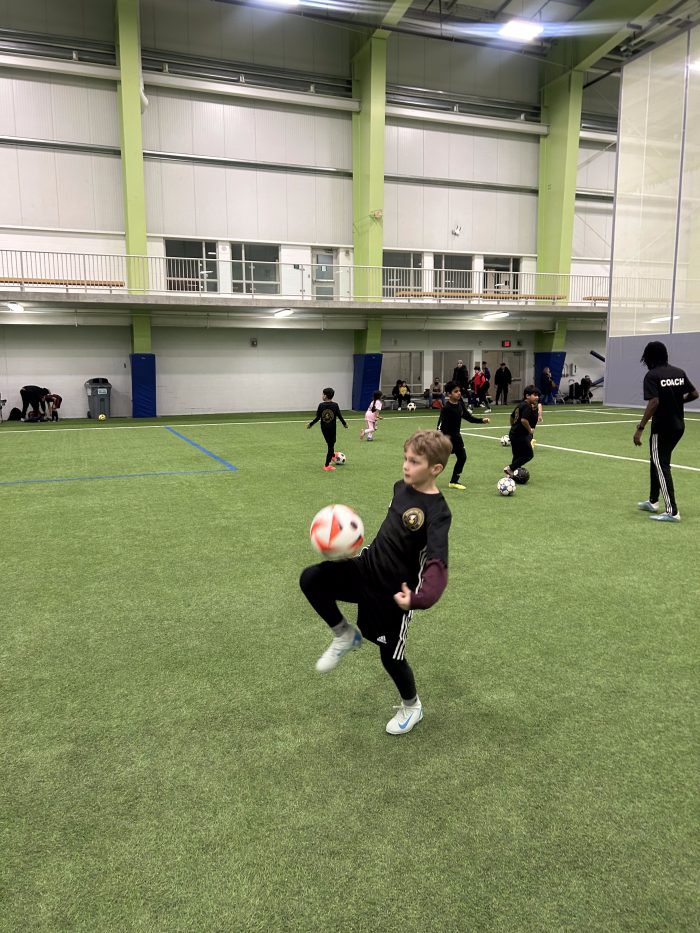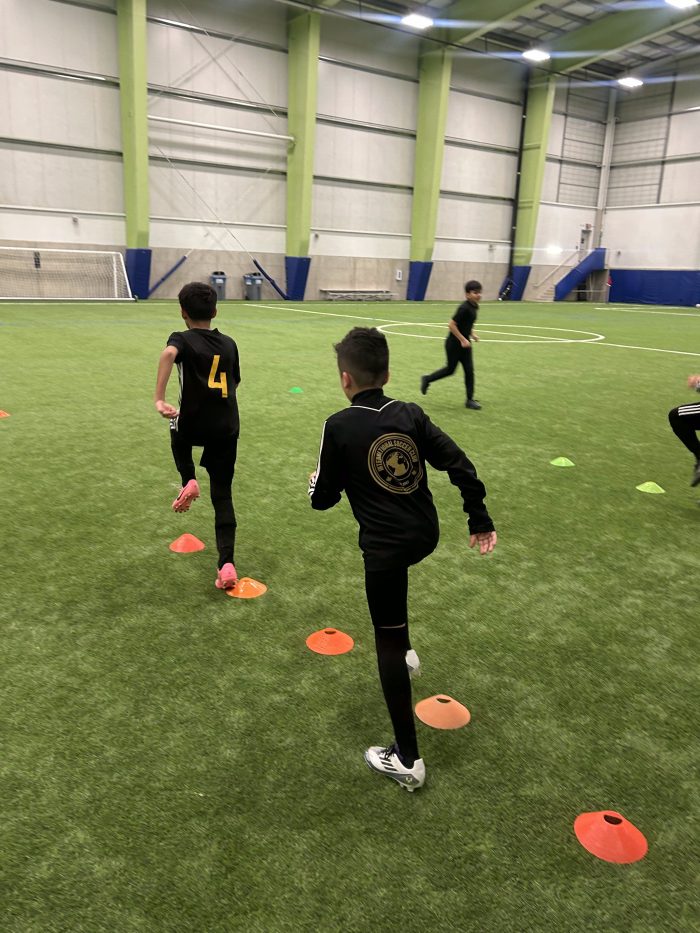April 8, 2025

We all strive to perform at our highest level, especially in a physically demanding sport like soccer. Whether participating in youth soccer, training for competitive soccer tryouts, or simply looking for the best soccer in Mississauga, injury prevention is crucial. Proper soccer training, warm-ups, and recovery techniques help players stay fit, avoid common injuries, and maximize their time on the field.
Why Injury Prevention Matters in Soccer
From local soccer leagues to high-level programs like OPDL, soccer requires endurance, agility, and strength. Without proper preparation, players, especially those in kids’ soccer in Mississauga are at risk for injuries such as sprains, muscle strains, and knee issues. Implementing preventive strategies helps athletes perform at their best while reducing downtime due to injuries.
Warm-Up and Cool-Down Routines
A structured warm-up prepares the body for physical activity and reduces the risk of injuries. Whether you’re attending soccer tryouts in Mississauga or playing in a local soccer league, always start with:
– Dynamic stretching (e.g., leg swings, lunges, arm circles)
– Light jogging to elevate heart rate
– Ball control drills to activate soccer-specific muscles
Cooling down after a game or soccer training session is equally important. Incorporating static stretching and deep breathing helps with muscle recovery and prevents soreness.

Strength and Conditioning for Injury Prevention
Strength and conditioning play a key role in injury prevention. Athletes in competitive soccer tryouts and youth soccer in Mississauga benefit greatly from exercises that improve core stability, leg strength, and flexibility. A strong core provides better balance, while leg and ankle exercises help reduce the risk of common injuries like sprains. Programs such as OPDL and the I Model emphasize proper strength training to ensure young players develop endurance and resilience.
The Role of Hydration and Nutrition
Injury prevention is not just about stretching and training—it also depends on proper hydration and nutrition. Players looking for soccer tryouts or those in structured soccer leagues must maintain their energy levels by drinking enough water before, during, and after matches. Dehydration leads to muscle fatigue, increasing the risk of cramps and strains. A balanced diet rich in proteins, carbohydrates, and healthy fats is also crucial for muscle recovery and maintaining peak performance, especially for players involved in soccer.
Avoiding Common Soccer Injuries
Regardless of experience level, injuries can occur at any time. For those involved in kids’ soccer, high-level leagues like OPDL, or competitive soccer tryouts, it is important to recognize and prevent common soccer-related injuries. Ankle sprains are among the most frequent injuries, often caused by sudden movements or improper footwear. Strengthening the ankles and choosing the right soccer cleats can help reduce the risk. Hamstring strains are another common issue, typically resulting from inadequate warm-ups or overstretching. Regular flexibility exercises and proper warm-ups can significantly lower the chances of these injuries. Knee injuries, such as ACL tears, can be particularly severe, and practicing safe landing techniques and agility drills is crucial for players looking to avoid them.
The Need for Proper Rest and Recovery
One of the most overlooked aspects of soccer training is rest and recovery. Whether preparing for soccer tryouts or competing in a local soccer league, players must allow their bodies to recover. Adequate sleep, hydration, and post-game muscle care—such as foam rolling or massage therapy—can make a huge difference. Taking rest days helps prevent overuse injuries, ensuring players remain strong and ready for their next match.
Injury prevention is essential for players at all levels, from kids’ soccer to elite programs. Whether you’re training for competitive soccer tryouts, or joining a soccer league, prioritizing warm-ups, strength training, hydration, and recovery will help you stay injury-free and perform at your best. With the right precautions, soccer remains a fun, competitive, and safe sport for all players.
